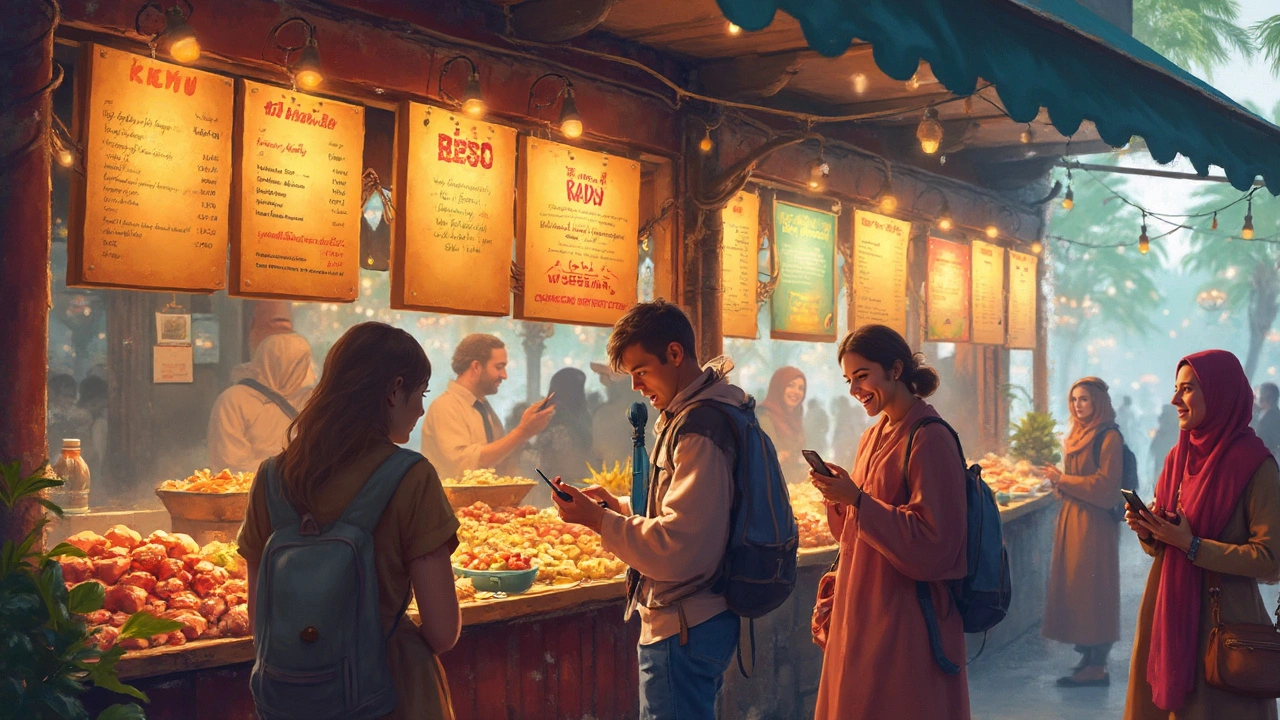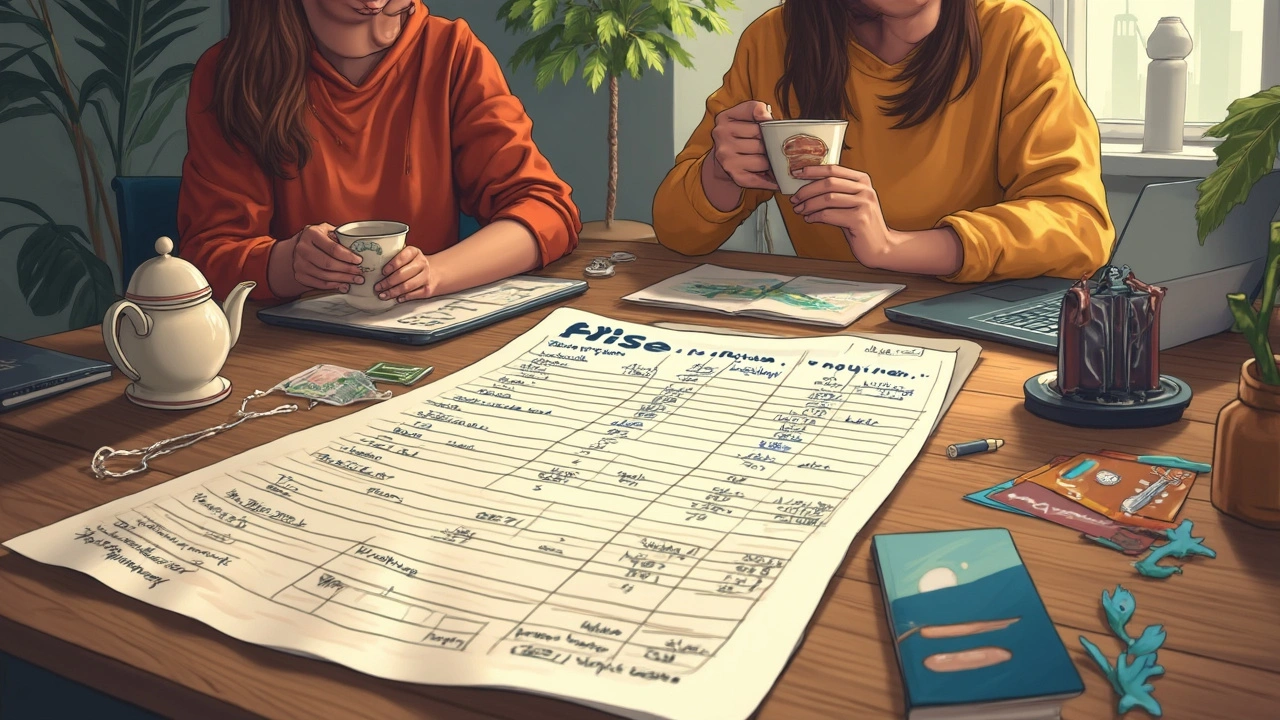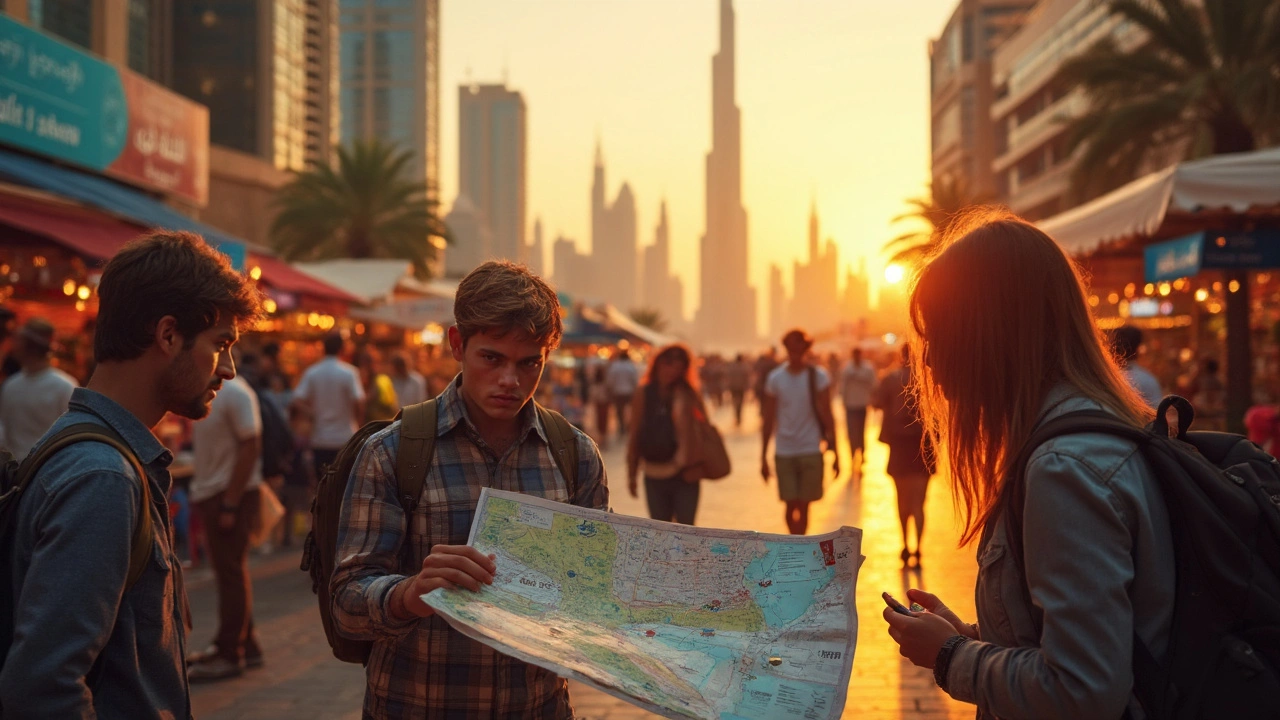Flashy, futuristic, and even a little wild—Dubai is the kind of city that grabs attention with those record-breaking skyscrapers and mega-malls. But once you get past the shiny surface, a question keeps popping up: Is Dubai expensive in US dollars? Folks want the truth, not hype: do you need a celebrity bank account or will your wallet survive the desert sun? Let’s get right down to what your dollars really buy in the emirate that does nothing by halves.
How Far Do US Dollars Really Go in Dubai?
If you check the exchange rate this morning (June 25, 2025), you’ll see that 1 US dollar gives you about 3.67 UAE dirhams (AED). This is one of the most stable pegged exchange rates in the world and honestly, it’s nice not having to sweat sudden currency swings. So converting prices is smooth (just divide AED prices by 3.67 for a rough USD number). But let’s get into some reality checks.
Dubai covers the full spectrum of spending—from $3 cups of karak chai at a street café to $300 dinners in the world’s tallest building. Hotels? You can snag a simple room for $40/night or blow past $1000 in the Burj Al Arab, the only self-branded “7-star hotel.” Here’s something you might not expect: mid-range hotel rates for 2025 average around $105/night for a basic double, which, considering Dubai’s reputation, is pretty reasonable for solo travelers or couples.
You want something to show your friends back home, right? Shopping is both a sport and a spectacle in Dubai. You’ll find international luxury brands in glitzy malls, but you can also haggle your way through the old gold souks and spice markets. Just remember: a small gold pendant might start at $60, but prices can change wildly depending on gold rates. Bargain-hunting? Some international chain stores actually charge less here than in the US (thanks, no sales tax), but tech gadgets and imported alcohol come with higher price tags.
As for essentials, let me clear up any mystery: regular groceries are often cheaper than in American cities—think $1 for a fresh loaf of bread, $3 for a liter of milk, and $1.50 for a dozen eggs. The sticker shock sets in when you buy anything imported or rare, like blueberries for $6 a pack.
| Item | Dubai Price (AED) | Dubai Price (USD) |
|---|---|---|
| Budget Hotel (per night) | 150 | 41 |
| Mid-range Hotel (per night) | 385 | 105 |
| Fast Food Meal | 30 | 8.20 |
| Restaurant Dinner (3 courses, mid-range) | 285 | 78 |
| 7-Day Metro Card | 110 | 30 |
| Coffee (regular) | 18 | 4.90 |
| Bottle of Water (0.5L) | 2 | 0.54 |
| Taxi (8 km ride) | 36 | 9.80 |
| Entry to Burj Khalifa Obs. Deck | 180 | 49 |
Worth noting, you can get around with public transport pretty cheaply (more on that soon)—and while luxury surrounded by supercars is Dubai's image, not every experience empties your bank account.
Hotels, Airbnbs, and Where to Rest Your Head
If your first thought is, “I bet hotels in Dubai are only for sheikhs and celebrities,” let’s set the record straight. Dubai offers hotels for every kind of traveler—flashpackers, families, solo wanderers, festival goers, and business execs. In 2025, hotel room choices are wild. You’ve got chain hotels right on Sheikh Zayed Road for under $60, family-friendly resorts along Jumeirah Beach hovering around $180/night, and breathtaking views from sky-high towers for anywhere between $300-700.
But if you’re keen on living local and saving money, Airbnb-type rentals are popular and often more affordable for longer stays. A central one-bedroom apartment typically costs $90-120/night, but prices shoot up during Expo events or major holidays like Eid. You can even find hostel dorms for less than $30 if you don’t care about fancy perks.
The real hack: avoid peak season (December to February, and late March-April when the weather is glorious but the prices soar). Dubai in summer (June-August) brings steamy weather but also hotel deals slashed by up to 40%. Sounds rough? Almost every hotel comes with a temperature-controlled pool and blasting AC, so it’s doable.
Don’t forget that prices can jump suddenly during special events—so book early if you’re aiming for New Year’s Eve fireworks or major global expos. Compared with cities like London, New York, or Paris, Dubai’s mid-tier hotels can actually deliver more luxury for the same price in dollars. Add in those rooftop pools and breakfast spreads and it gets better.
Hidden fee alert: Dubai introduced a nightly “Tourism Dirham” fee (usually $2.70 to $6.80 per night depending on hotel class), so factor that in when budgeting. Plus, double-check if breakfast is included—it often saves you $20+ per day that you’d otherwise spend on coffee and croissants.
Another gem: many hotels offer free shuttles to the beach or malls, which saves taxi money. Look for package deals that throw in meals, spa credits, or tickets to theme parks, especially during off-peak months when hotels hustle for business. If you like to party or shop at 2 am, consider staying in the Downtown or Dubai Marina neighborhoods—close to the action and most of the fun.

Food and Drink: From Street Eats to Michelin Treats
One of the things people get so wrong about Dubai is thinking that every meal breaks the bank. Sure, you can drop $200 on a steak with a city view, but locals munch their way through a world of cheap, tasty eats every day. A shawarma wrap from a corner shop? $1.50. A plate piled with Indian biryani? $3, and it’ll keep you full for hours. The strong, milky karak chai is the city’s classic pick-me-up and a total bargain for just under a dollar.
If you want to splurge, Dubai’s home to more than a dozen Michelin-starred restaurants. The 2024 Dubai Michelin Guide spotlighted gems like Tresind Studio and Zuma, where a three-course dinner with wine can toss you north of $120 per person. But here’s the fun part: you can book lunch at many of these spots for almost half the price of dinner and still brag about it. Friday or Saturday brunch is a Dubai institution and ranges from $50 buffet blowouts in five-star hotels to $100+ boozy affairs that stop traffic (literally—there’s free-flowing champagne at some of these brunches).
Supermarkets like Carrefour and Lulu stock everything from familiar American cereal brands to Lebanese olives and spicy Pakistani snacks. You’ll pay US prices (or higher) for anything imported or organic, but stick with local produce, dairy, and bakery items for real value. Expats often say they can eat just as cheaply as back home, especially if they skip specialty health food or Western imports. If you love coffee, stick to local chains—Starbucks and Costa will set you back $6 or more for a latte, while homegrown brands come in at $2-3.
Drinking alcohol is where many people get blind-sided by the price tag. Hotels and licensed bars are the only legal places to buy a drink, so expect to pay $12-18 for a pint of beer or glass of wine. Bottles of wine start at around $55 in restaurants. So if you’re not a big drinker, your wallet will thank you. Alcohol shops are licensed and only available to non-Muslims with permits—tourists can buy at Dubai Duty Free but don’t expect regular U.S. liquor store deals.
Tip: Tap water is technically safe but almost everyone buys bottled, which is only $0.50 for a half-liter at groceries. Stay hydrated, and if you spot a "Dubai Entertainer" app deal for 2-for-1 meals, grab it. It pays for itself by your second meal out.
Transportation: Getting Around Without Breaking the Bank
If you pictured Dubai as one big supercar showroom, you’re not wrong—there’s a Ferrari or Lambo on every block. But for us regular folks, Dubai’s public transport is reliable, safe, and, compared to the US, pretty affordable. The Dubai Metro, a sleek, driverless train system zipping through air-conditioned bridges, runs the north-south spine of the city and connects major malls, tourist sites, and even the airport. A 7-day pass for the basic Red Line zone costs about $30—way cheaper than renting a car or hopping Ubers everywhere (which can add up quickly). If you want to explore further, you can top up your Nol smart card for trams, buses, and even water taxis.
Taxis are everywhere and a safe bet. An average 8 km (5-mile) ride costs around $10, though rush hour traffic can stretch the time (the meter keeps ticking!). Structured ride-sharing like Uber and Careem operate in tandem with regular city cabs; the price difference is usually just a couple of bucks. For anything over 15-20 minutes, metro or tram scores you big savings. Airport to Downtown is a $25-30 cab ride or just $2 by Metro.
If you’re after bragging rights, treat yourself to a ride in a flying taxi—no joke, Dubai launched aerial “vertiports” in 2024, with short hop rides that cost over $80 a person. Not necessary for basic transport, but hey, this is the city that loves to show off. Parking fees in busy areas add up—expect $2-3 per hour at the malls and downtown.
Want to head to Abu Dhabi? Buses between Dubai and the UAE capital are spotless, comfy, and only $8 for a 2-hour trip—a serious value compared to intercity prices elsewhere. For sightseeing, city bus tours range between $35 and $50 for a full day, which includes hop-on, hop-off options at dozens of stops.
- If booking a hotel, look for locations near the Metro line.
- Download RTA’s Wojhati app for real-time public transport schedules and journey planning.
- Don’t try to walk between far-flung city sites—distances are massive, and summer heat is no joke.
Wheelchair users and families with strollers will find the Metro and high-end malls surprisingly accessible, which isn’t always the case in other cities. If you’re on a super-tight budget, yes, you could get by using only the Metro and buses, spending under $40 for a full week’s transport. The fancier you want to travel, the pricier it gets, but budget options exist for every kind of traveler.

Activities, Attractions, and What Will It Cost You?
No way around it: Dubai has the world’s tallest tower, manmade islands that look like palm trees from space, and a ski slope inside a shopping mall (yeah, you read that right). Doing all the big-ticket tourist stuff will burn through cash pretty fast. Entry to the Burj Khalifa observation deck hovers around $49 (prime sunset slots cost more). Want to experience the Atlantis Aquaventure water park? Bank on $100 per adult for a full-day pass. Desert safaris—complete with dune bashing and barbecue dinners—go for $60-100 depending on perks and group size.
But there are plenty of ways to soak up the city for free or almost nothing. Walking through the historic Al Fahidi district, marvelling at old wind towers and art galleries, costs $0. Crossing the bustling Dubai Creek on an abra wooden boat is just $0.30 each way—one of the city’s best bargains. wandering the Gold and Spice Souks can fill an afternoon with color and smells and doesn’t cost a dime—unless you spot the world’s heaviest gold ring, which weighs over 140 pounds and dazzles tourists all day.
Bringing kids or teenagers? Dubai Mall (world’s largest by land area) packs in a fountain show, indoor aquarium, VR park, and even a huge ice rink. The basic fountain show is free—so is posing under the Burj Khalifa—and entry to the aquarium tunnel starts at just $25. The Dubai Frame, an architectural icon, lets you walk across a glass bridge high above the city for about $15. Visiting mosques is free, but tourist tours (like the Jumeirah Mosque) have a small charge and worth every penny for inside stories about local culture. Friday afternoons see “beach clubs” open up, and some let you in free if you book a meal—otherwise, $25-50 covers entry and a beach lounger.
Don’t miss the free Dubai Fountain shows outside Dubai Mall, which start every half-hour after sunset. Even local parks and public beaches are clean and well-kept, and you pay a couple of dollars entry at most. If theme parks are your thing (think Legoland, IMG Worlds of Adventure, or Motiongate), day tickets can be expensive at $70-110, but combo or online advance tickets often save up to 30%.
April and October bring the city’s best festivals, from giant outdoor markets to global food fairs—some are ticketed, but you’ll find loads of free outdoor entertainment and street eats. Traveling solo? Look for free guided walking tours or free yoga mornings at Kite Beach.
Here’s a quick cheat-sheet of activity prices for Dubai in 2025:
| Activity | Typical Price (AED) | Approx. USD |
|---|---|---|
| Burj Khalifa At The Top | 180 | 49 |
| Desert Safari (mid-range) | 220 | 60 |
| Atlantis Aquaventure | 370 | 100 |
| Dubai Frame | 55 | 15 |
| Abra Ride (Creek) | 1 | 0.27 |
| Friday Brunch (mid-range) | 180 | 49 |
| Theme Park (full day) | 405 | 110 |
So, is Dubai expensive in US dollars? Dubai is a “choose your own adventure” kind of place—if you want the royal treatment, you can spend like a star. But with smart planning, real dollar-stretching options, and a little curiosity, you can do Dubai on a shoestring budget or even cheaper than a big weekend in American cities. The trick is knowing where to look, when to visit, and how to blend shiny new thrills with old-school local flavor. That’s the kind of adventure that never goes out of style.
